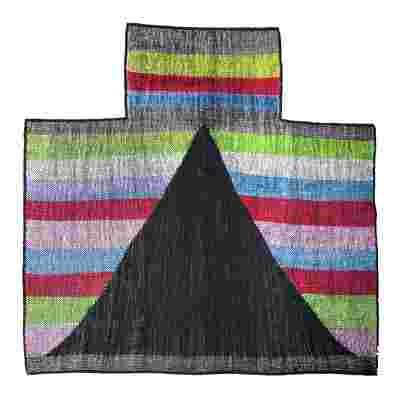“My people weave their tents, their beds, their blankets, their clothes,” reflects textile artist Taher Asad-Bakhtiari, who was born in Tehran and descends from members of Iran’s seminomadic Bakhtiari tribe. “Everything they have is woven in different ways. This is our craft.”
Inspired by that tradition, Asad-Bakhtiari—who now splits his time between New York, Dubai, and Tehran—launched the Tribal Weave Project, working with Iranian artisans to reinvent the kilim and his ancestors’ signature high-pile rug, the gabbeh. By introduc-ing unexpected materials like lace, polyurethane, and metallic threads, he has elevated functional floor coverings into fine art. “I wanted to work within this craft and evolve it,” explains Asad-Bakhtiari of the labor-intensive process. (A single textile can take up to four months to complete.) “My goal was to give it a new identity.”
His approach resonated across the globe, from Beirut, where he shows with Carwan Gallery, to New York, where he just made his Stateside debut at the International Contemporary Furniture Fair. Collaborating with Bernhardt Design, Asad-Bakhtiari has reinterpreted Iranian weaves into six industrial-grade upholstery fabrics.

One of Asad-Bakhtiari’s colorful kilims woven by Iranian artisans.
Whereas one mimics the black-and-white motif of Bakhtiari jackets, another is flecked with shimmering silver yarn, nodding to the metallic accents of traditional Iranian clothing. And in June, he unveiled a series of graphic, riotously colorful textiles—woven by artisans in Afghanistan—at the Met Breuer shop.
“Geometry is the basis of all weaves,” he says, referring to the long, slender tapestries’ repeating triangles and arrows. “I just made it more bold—I minimizedit.” To him, these simplified motifs symbolize something greater than his own heritage. “They represent all tribes,” he says. “They speak every language.” taherasadbakhtiariom
